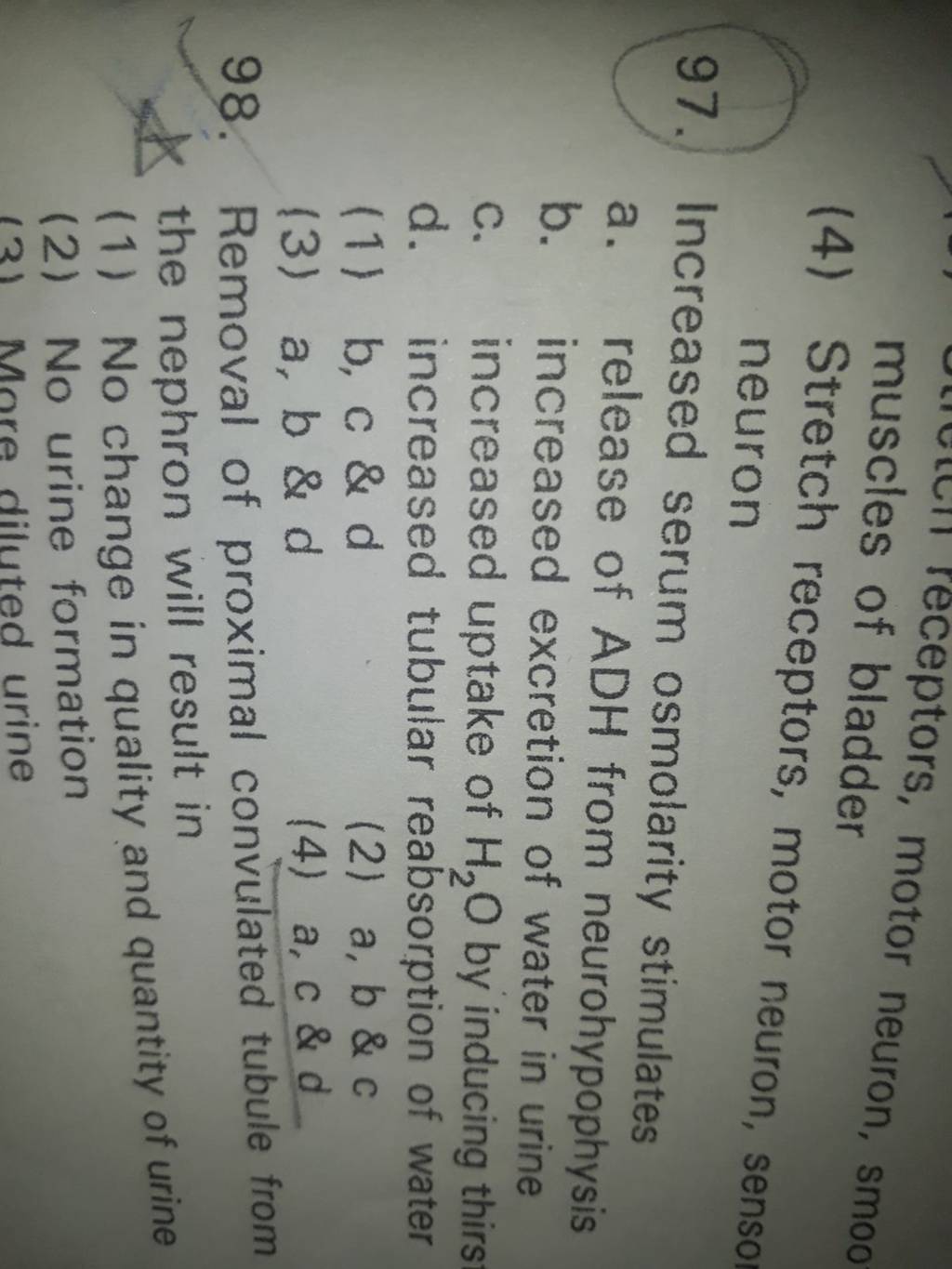Question
Question asked by Filo student

Increased serum osmolarity stimulates a. release of from neurohypophysis b. increased excretion of water in urine c. increased uptake of by inducing thirs d. increased tubular reabsorption of water
- b, c \& d
Found 5 tutors discussing this question
Discuss this question LIVE
13 mins ago
Filo tutor solution
Learn from their 1-to-1 discussion with Filo tutors.

Generate FREE solution for this question from our expert tutors in next 60 seconds
Don't let anything interrupt your homework or exam prep with world’s only instant-tutoring, available 24x7

One destination to cover all your homework and assignment needs
Learn Practice Revision Succeed

Instant 1:1 help, 24x7
60, 000+ Expert tutors

Textbook solutions
Big idea maths, McGraw-Hill Education etc

Essay review
Get expert feedback on your essay

Schedule classes
High dosage tutoring from Dedicated 3 experts
Practice more questions on Human Physiology
Question 4
Easy
Views: 5,592
Students who ask this question also asked
Question 2
Views: 5,288
Question 4
Views: 5,916


Stuck on the question or explanation?
Connect with our Biology tutors online and get step by step solution of this question.
231 students are taking LIVE classes
| Question Text | Increased serum osmolarity stimulates a. release of from neurohypophysis b. increased excretion of water in urine c. increased uptake of by inducing thirs d. increased tubular reabsorption of water |
| Topic | Human Physiology |
| Subject | Biology |
| Class | Class 11 |



